I have been using both cameras since the day they were released.
The Sony A7 IV is a full frame beast, combining the best of the A7 line at an affordable price.
The new A6700 has all the latest features but in a super compact body.
At the bottom of the post you will find a summary of the 5 biggest differences between the two, and which one I prefer for certain scenarios.
1. Image Quality

Sensor:
- Sony A6700: APS-C sensor with 26 megapixels
- Sony A7 IV: Full frame sensor with 33 megapixels
The A7 IV has a bigger, full frame sensor. The field of view is ideal for landscape and wider work, but less optimal for super telephoto reach.
Both can deliver amazingly sharp results with rich colors, so there are no losers in this category, only winners. I’m happy with both cameras and there is no way you could ever tell a difference.
The A6700 has that 1.5x crop factor which is amazing for wildlife and telephoto work. Your lenses can be smaller, cheaper and lighter, making your camera gear feel way lighter.
For cropping, 33MP vs 26MP can help if you do a lot of wildlife/sports and don’t have the proper lenses, but resolution is not one of the major reasons you’d pick the A7 IV over the A6700.
Related: Sony APS-C vs Full-Frame – The 3 Biggest Differences
ISO:
- Sony A6700: 100-32,000 expands to 50-102,400
- Sony A7 IV: 100-51,200 expands to 50-204,800
Despite it being 2 years older than the A6700, the Sony A7 IV is ~1 stop better at high ISO’s thanks to the FF sensor. Both cameras are incredibly usable in low light but the A7 IV just delivers cleaner images above 3,200.
 Sony A7 IV – ISO 3,200 – 1/2500 – f/7.1
Sony A7 IV – ISO 3,200 – 1/2500 – f/7.1
Shutter Speed:
- Sony A6700: Mechanical maximum 1/4000 (electronic max 1/8000)
- Sony A7 IV: Mechanical & Electronic maximum 1/8000
The A7 IV features a mechanism that closes the sensor when the camera is turned off. This is great for swapping lenses outdoors; unfortunately, none of the APS-C cameras have it.
2. Video Settings

Video:
- Sony A6700: It can record at 4K at 60p (no crop) by oversampling from 6K, as well as 4K at 120p but with a 1.58x crop.
- Sony A7 IV: It can record 4K at 30p (no crop) by oversampling from 7K, whereas 4K at 60p introduces a 1.5x crop. There is a 120p option but only in Full HD.
Both cameras are ideal for amateur and professional video use. You can record in 4K at 10-bit, 4:2:2, with all the standard Sony profiles and H.265 or H.264 formats. S-Log3, S-Cinetone, you name it.
The A6700 has no additional 1.5x crop at 4K 60p because it’s already using a 1.5x smaller sensor. The only time when this cropping can be an issue on the Sony A7 IV is when you use the same lens and want the same framing, but can’t due to the 1.5x crop when going from 30p to 60p.
Recording at 4K 120p on the A6700 introduces a 1.58x crop, giving you an almost 3x longer field of view. Great for wildlife, but terrible to anything wide because your 10mm basically becomes equivalent to 30mm (not to mention the slight crop of Active stabilization)
I’ve never had any overheating issues, but I also never shot a clip over ~30 minutes. Since the A6700 has a smaller body, you can expect it to overheat quicker if you’re recording at 60p for a longer time, or in a hot environment.
The A6700 has a cool new featured called “Auto-Framing” that can follow you around and digitally zoom to make it seem as if someone else is recording you. It also allows you to upload custom LUTs and the ability to create video time-lapses.
Webcam:
- Both cameras: Live stream in 4K
3. Auto Focus
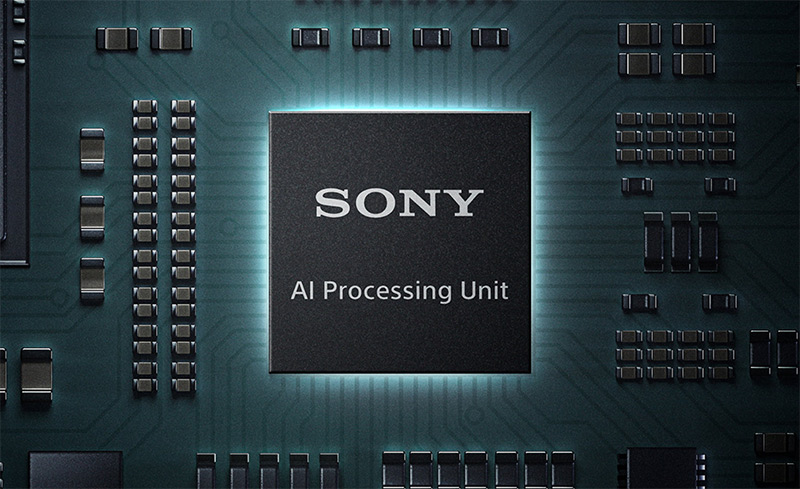
- Sony A6700: 759AF points, works from -3EV to +2EV. Uses Sony’s latest AI chip
- Sony A7 IV: 759AF points, works from -4EV to +20EV
None of these 2 cameras disappoint when it comes to auto focusing, but the A6700 is the winner here.
Points wise, they’re identical, and the A7 IV can focus in slightly darker conditions. However, the A6700’s AI processing unit allows it to recognize not only Eye AF like the A7 IV does, but faces and bodies of people.
It can also detect birds, animals, insects, cars and airplanes. Sony A7 IV has animal/bird option, but it’s limited to their eyes only. Even if the subject is turned away from you, or has a hat/glasses, the AI chip is intelligent enough to recognize it’s a human.
This applies to videos as well, and the A6700 displays a box around the object it recognized.
4. Body Stabilization

- Sony A6700: 5.0 stops (5-axis stabilization)
- Sony A7 IV: 5.5 stops (5-axis stabilization)
Nearly identical stabilization on both cameras, although the A7 IV should do 0.5 stops better. Nothing to compare here.
As far as video stabilization goes, both Active Stabilization that crops the image by 1.1x, and gyro information that you can later correct (but lose a bit of resolution) in Catalyst Browse.
5. LCD & Viewfinder

LCD Display:
- Both cameras: 3.0″ LCD fully articulated with 1.04 million dots
Same size, articulation and resolution. I wish they had a little bit more resolution but it’s okay.
Viewfinder:
- Sony A6700 2.39 million dots with 0.7x magnification (0.39″ inch size)
- Sony A7 IV: 3.68 million dots with 0.78x magnification (0.50″ inch size)
If you only look through the viewfinder, you will most certainly prefer the Sony A7 IV. It’s bigger and better, plus positioned more central.
The A6700’s viewfinder is on the left side and it takes some time if you’ve never used Sony’s APS-C cameras before. After a day or two however, you will naturally know where to position your eye.
6. Memory Card & Speed

Memory Card:
- Sony A6700: 1 x SD slot, UHS-II compatible
- Sony A7 IV: 2 x SD (UHS-II) slots (1 can be CFExpress Type A)
Bigger body, bigger storage space. If you can’t shoot without 2 slots (backup, or one for video/photo) then the A6700 will disappoint you. I’ve got a 256GB V90 card for the A6700 and a couple of smaller ones for the A7 IV.
Not a major deal to me, but plenty of photographers can’t live without 2 slots.
Burst Mode & Buffer:
- Sony A6700: 11 frames per second, 1000+ JPEG or 59 RAW files buffer
- Sony A7 IV: 10 frames per second, 1000+ JPEG or RAW files buffer
In JPEG format, both are excellent and allow you to shoot for more than 10 seconds straight.
In RAW, the A7 IV leaves the A6700 far behind with “only” 59 shots. That’s around 4-5 seconds and honestly still good enough to me (even for animals), but if most of your photography is done in burst mode, don’t underestimate the A7 IV here.
Related: The 7 Best Accessories for Sony A6700
7. Body & Ports

Size & Weight:
- Sony A6700: 493g (1.09 lbs.) including battery, 122.0 x 69.0 x 75.1mm
- Sony A7 IV: 658g (1.45 lbs.) including battery, 131.0 x 96.0 x 80.0mm
I love how small the Sony A7 IV is, but when you pack a couple of full frame lenses in your bag, you sometimes get APS-C hallucinations and wonder what that world is like.
The A6700 is noticeably more compact and feels different in hands. Weigh wise, these cameras are not worlds apart, but when you use them with lenses you can feel the difference in just a few minutes.
I most certainly prefer the A7 IV’s grip, it feels better and that extra size/weight is often an advantage as well, there is no denying that.
However, the A6700 is easily the best A6000 series camera so far and that includes the grip and exterior. Sony has made plenty improvements here and I have no trouble using it at all, even though you lose the AF joystick button (you can use the dial pads to move your AF points).
Both are weather sealed (moisture and dust resistant), making them ideal for many outdoor situations, but the Sony A7 IV is probably a little bit more secure (not the mention the shutter closing when turned off).
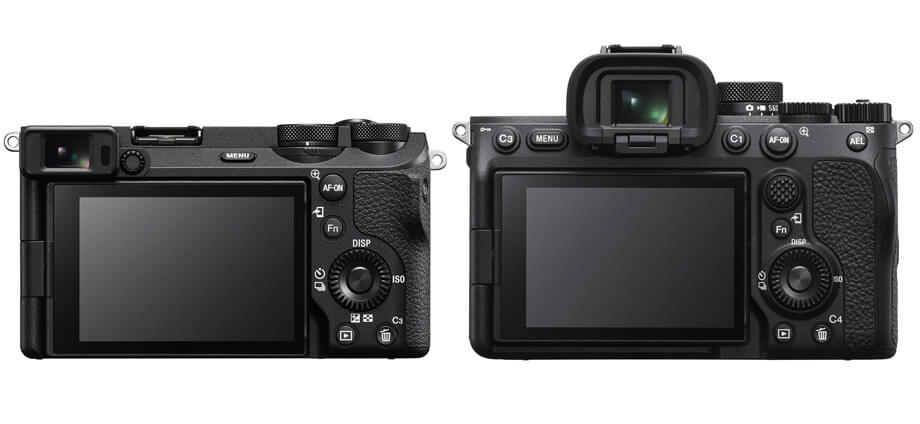
Being a bigger camera, the Sony A7 IV sports an AF joystick and 1 more customizable buttons.
The photo/video mode dial on both cameras is perfectly fine, although in different positions (A6700 rear, A7 IV on top). I don’t prefer either, but I do have to be a bit more careful on the A6700 because I have sometimes accidentally rotated the regular mode dial.
Remember, the biggest difference in terms of weight and size are really noticeable when you mount a lens. For example, checkout the Sigma 18-50mm f/2.8 versus Sigma 28-70mm f/2.8 on the right.
Related: The 8 Best Lenses for Sony A6700

Connections:
- Sony A6700: Micro HDMI, Mic & Headphone (3.5mm), USB-C 3.2 Gen 1, Bluetooth & WiFi
- Sony A7 IV: HDMI, Mic & Headphone (3.5mm), USB-C 3.2 Gen 2, Bluetooth & WiFi
The A7 IV has a full-sized HDMI and faster USB transfer speeds.
8. Battery Life

- Sony A6700: 550 shots (EVF) & 570 shots (LCD) | 100 minutes for video – NP-FZ100 Battery
- Sony A7 IV: 520 shots (EVF) & 580 shots (LCD) | 110 minutes for video – NP-FZ100 Battery
Both use the same NP-FZ100 battery and achieve a similar shot count. These numbers are way higher in the field and can easily last a whole day. As with every camera though, I seriously recommend you to get at least 1 extra.
The A6700 and A7 IV can be powered through USB-C while in use.
9. Price & Lenses
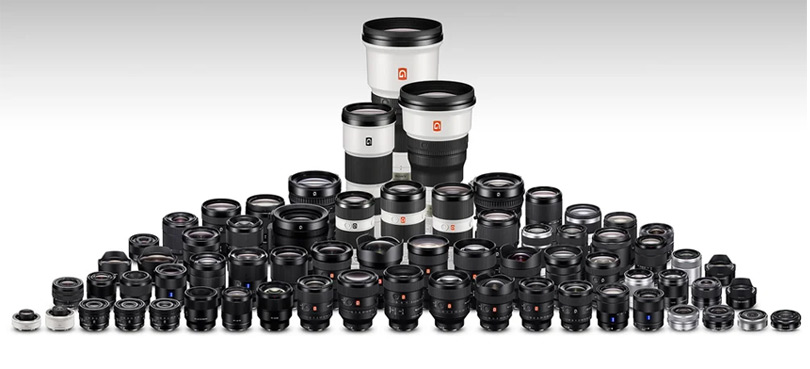
Price:
- Sony A6700: Body Only (~$1398)
- Sony A7 IV: Body Only (~$2499)
The A7 IV is a full frame camera, hence the higher price tag. You pay for the bigger body and a bigger sensor with improved low light performance.
The A6700’s price is an excellent starting point if you’re looking for a serious APS-C camera that won’t hold you back regardless of what photography style you have.
You can check the current prices of Sony A7 IV at Amazon at Sony A6700 at Amazon.
If you buy anything after clicking the links that go to Amazon, we receive a small commission.
Available Lenses:
- Sony A6700: E-Mount
- Sony A7 IV: FE-Mount
You’ve got lenses from Sony, Sigma, Tamron and many more for both models. The Sony A7 IV has an FE-mount but can accept E-mount lenses, just know that it will crop and change the field of view. The sky is the limit when it comes to full frame lens selection.
On the other hand, the A6700’s APS-C lens lineup is also excellent. Many of them are smaller, lighter and cheaper, plus you can always get yourself a full frame lens if there’s something specific you like. You can check out my 8 favorite Sony A6700 lenses here.
10. Which one is better for you?
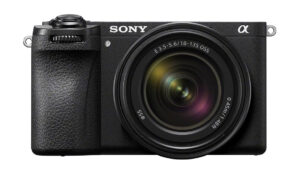
6 Reasons to pick the Sony A6700:
- Around $1100 cheaper body
- Smaller and lighter body, way more compact lenses to choose from
- AI Intelligence chip for improved subject recognition (compared to eyes “only”)
- 4K at 120p, 4K at 60p without an additional crop
- The 1.5x crop factor makes it easier to shoot wildlife/sports without buying huge lenses
- Custom LUT’s + Auto-Frame option
Price is the most important factor here. For that $1100 you save you can get 2-3 new lenses and that’s what truly elevates your photography/video to the next level. All cameras from the past few years are amazing anyways.
If you’re going with the A6700 for its size and portability, make sure to look at what lenses you plan on buying because they’re not all equally as compact.
Having an 1.5x crop factor for all lenses is incredible for wildlife because a 300mm lens has a field of view equivalent to a 450mm lens on the Sony A7 IV. For wider scenes it’s a downside, but we have plenty of ultra-wide lenses to choose from so you won’t be limited at all.
Video wise, 4K without a crop can be important to many, and that 120p option is really nice as well.
Auto focus on both cameras is incredible and in most situations, the A6700 picks up on bodies/people way before the A7 IV would, thanks to its AI subject recognition. It’s not 100% perfect and there are times where it confuses me, but I get better results than with the already capable A7 IV.
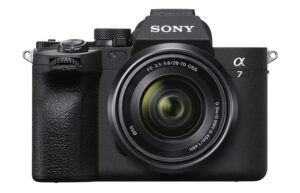
6 Reasons to pick the Sony A7 IV:
- Full frame sensor with 1 stop higher max ISO sensitivity and less noise
- Shutter closes when turned off, better for switching between lenses in windy/harsh situations
- Much bigger RAW buffer
- Mechanical shutter goes to 1/8000 (1 stop higher)
- 7 more megapixels
- Body improvements (better grip, 2 x SD slots, AF joystick and 2 more custom buttons)
The Sony A7 IV is super fun to shoot with. That 33MP sensor is a work-horse even for low light situations, and I’m always amazed at how clean the images look at 6,400. The difference will be noticeable and if you mainly shoot in low light, this is an important factor.
Not having a crop makes it more suitable for ultra-wide work, with plenty of lenses to choose from. You’ve got 7 more megapixels to work with and it’s helpful in telephoto scenarios.
Besides the sensor, it’s the A7 IV’s body that makes it more appealing to many.
Common Questions:
Which Camera has Better Image Quality?
Both are great but the Sony A7 IV has a bigger sensor with improved low light performance. The difference will be more obvious above ISO 3,200.
Which Camera is Better for Video?
Both downsample from 7K/6K, resulting in a very sharp and detailed look. However, the Sony A6700 has a couple of extra features that make it more convenient to record with, along with 4K at 120p/4K at 60p with no crop.
Which One is Better for Low Light?
For low light use, the Sony A7 IV is better. Each individual pixel is larger, thus resulting in better noise performance.
Which One is Better for Traveling?
The Sony A6700, thanks to it’s smaller form factor. Once you account for 2-4 lenses, the difference between APS-C and full frame gets really big.
Do They Have GPS?
Nor A7 IV or A6700 come with built-in GPS. You’d have to connect the camera to your phone and use the app to record your location.
Do They Have a Built-in Flash?
No, one of the reasons why both Sony A6700 and A7 IV are so compact is because they do not feature a built-in flash.
Which Camera is Better for Durability?
Both feature a magnesium-alloy body that’s dust/moisture resistant, but the Sony A7 IV offers a cool feature that closes the shutter when your camera is turned off, saving you from potential dust problems.
Should I Wait for a New Model?
The Sony A6700 was released in late 2023, and given how long it took for them to announce it, I would say we won’t see a new model for at least 3-4 years (late 2026-2027).
The Sony A7 IV was released in late 2021 so we are much closer to the announcement of the Sony A7 V. Personally, I’d say we will see the fifth version before 2025 ends, so if you can wait ~1-2 years go ahead.
What About Other Cameras?
Sony A7 IV vs Sony A7C II – The Same Camera?
Sony A6700 vs Sony A7 C II – Complete Comparison
Video Examples
Official videos from Sony.


